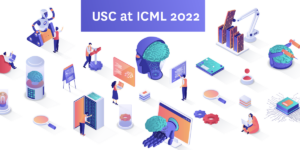Creating computer models of the Southern California’s seismic environment accurate enough to guide planners and builders is the topic of the Friday, March 15 entry in the monthly HPCC seminar series.
Tom Jordan, Director of the Southern California Earthquake Center (SCEC) will discuss Computational Pathways in Seismic Hazard Analysis in the JEF 124 conference room at 1:30 pm.Jordan will describe the wide use of computational science in SCEC’s ambitious program to “to develop physics-based models of earthquake processes and integrate these models into a new scientific framework for seismic hazard analysis and risk management.”
According to Jordan, SCEC is aiming at a “community modeling environment” which can will use raw seismic data and sophisticated modeling to perform Seismic Hazard Analysis — an area-wide, fine-scale inventory of Southern California quake damage potential.
In his talk, Jordan will describe how SCEC plans to achieve this end: “by bringing together four distinct computer science disciplines: (a) knowledge representation and reasoning, (b) interactive knowledge acquisition, (c) digital libraries and information management, and (d) Grid resource-sharing environments.”
Funded by the National Science Foundation, SCEC’s purpose is to give elected and appointed officials the scientific information needed to create legal standards and develop public policy on quakes and quake response.
Staffers at ISI will be able to attend the talk, as they have earlier HPCC monthly presentation, via teleconference in the ISI 10th Floor conference room. HPCC will also put Jordan’s talk up for web view later.
Founded in 2000, the HPCC is a university wide resource jointly operated by the Information Sciences Division and the USC School of Engineering’s Information Sciences Institute. It operates the most powerful Linux cluster computer in Southern California academia,.and works to provide and promote advanced computing for USC researchers.
The HPCC monthly lecture series, started late in 2001, is part of this effort. Dr. Jordan’s talk will be number 4 in the series.
Published on March 4th, 2002
Last updated on August 10th, 2021










